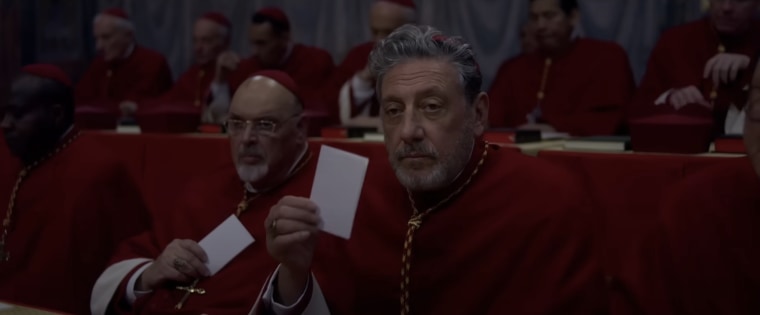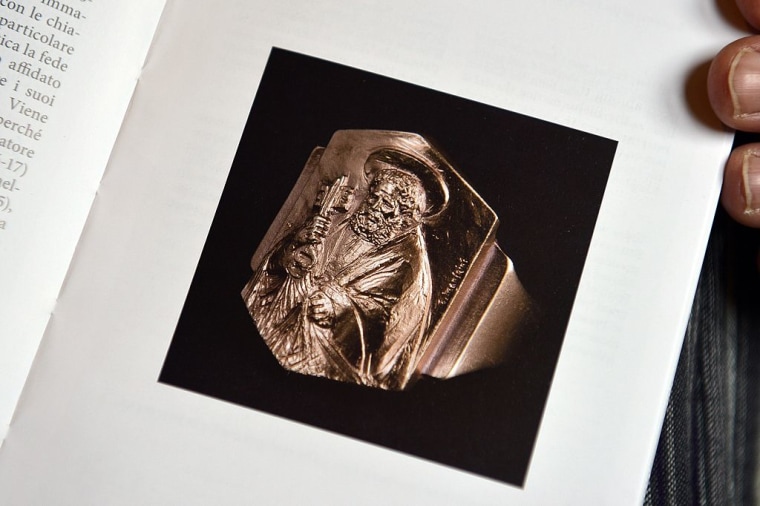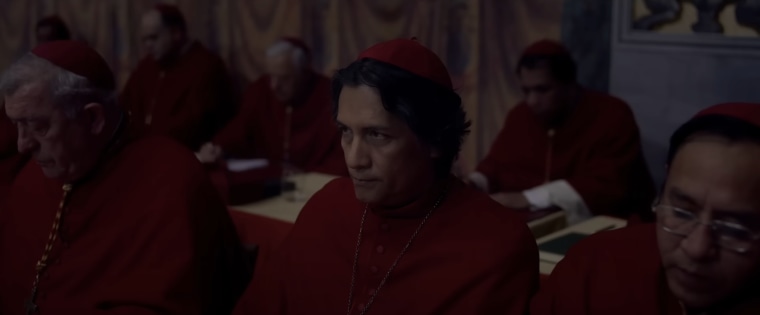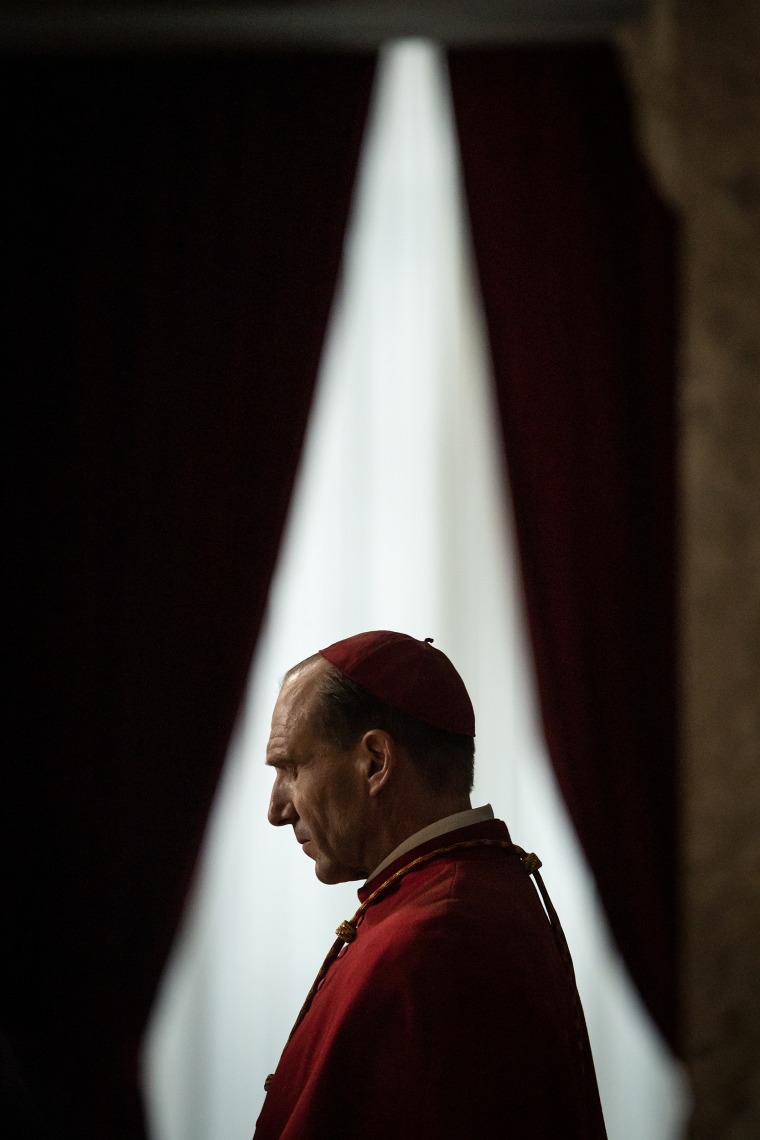Following Pope Francis’ death on April 21, all eyes are on the College of Cardinals who are set to start a conclave soon to elect a new pope.
The process has remained largely secretive over the eight centuries that conclaves have been used to elect new popes as cardinals sequester themselves during the voting process.
The conclave following the death of Pope Francis will begin May 7, Vatican officials announced. In the meantime, people have turned to the 2024 Oscar-winning film “Conclave” to get an inside look at the process. In fact, “Conclave” viewing rose 283% in the week following Pope Francis’ death, “coming in at nearly 7 million minutes watched across streaming platforms,” Carson Daly said on TODAY.
But how accurate is “Conclave” to the actual papal conclave? Let’s get into it.

What parts of ‘Conclave’ were spot-on?
While the process of selecting a new pope is extremely secretive, certain things are known, which the film shows.
The location
Much of the film unfolds in a re-creation of the Vatican’s famous Sistine Chapel, where the conclave takes place in real life.
The Sistine Chapel is sealed off until voting has closed “so that total secrecy may be ensured with regard to everything said or done there in any way pertaining, directly or indirectly, to the election of the Supreme Pontiff,” the Apostolic Constitution states.
The politics
The film accurate depicts the behind-the-scenes political conversations that occur between cardinals during a papal conclave, according to a Vatican expert.
“Keep in mind that cardinals are human beings. They’re political animals as well. They will be meeting in various places,” Philip Pullella, a Vatican expert and author, said in a segment that aired on TODAY April 21. “You know, Cardinal X will say to Cardinal Y, I’ve been talking about this to Cardinal Z.”
The timeline
Despite the drama and revelations, the voting in “Conclave” is fairly efficient. The cardinals take three days to elect a new pope in the film.
Pope Francis and Pope Benedict XVI were both elected slightly faster — in two days. The longest conclave in the 20th century was in 1903, when the election of Pope Pius X took five days.
The language
The new pope accepts the position using Latin phrase laid out by the Apostolic Constitutions.
Once a new pope has been selected, the dean of the College of Cardinals will ask the candidate-elect in Latin, “Do you accept your canonical election as Supreme Pontiff?”
The candidate-elect needs to respond with “Accepto,” which is Latin for “I accept.”
“Conclave” displays this exact conversation.
What parts of ‘Conclave’ were semi-accurate?
Other scenes in “Conclave” are partially correct.
The ring
After the late pope dies, the cardinals gather around his body. Cardinal Tremblay (John Lithgow) removes his ring. Then Tremblay immediately breaks it, delivering the line, “The throne of the Holy See is vacant.”
As “Conclave” shows, the pope’s signet ring, called Ring of the Fisherman, is destroyed after his death to signify the papal vacancy and to ensure that no forgeries can be made in the pope’s name as the ring serves as a seal for letters, too.
Traditionally the ring is removed from the pope’s body, then it is held by the camerlengo (a Vatican official) until it is ceremoniously destroyed, according to the Vatican News.

So, while the film got across the point that the ring needs to be removed and destroyed, it modified the process, depicting a private, quick ceremony.
The smoke
In the movie, cardinals burn their votes and send a signal to the outside world through the Sistine Chapel chimney. Black smoke signifies no choice has been made. White smoke signifies a new pope has been chosen.
The colors are right but the number of burning sessions is not. In the film, the ballots are burned after each vote, whereas during a real conclave the ballots are burned after each voting session.
According to the Vatican News, there are two voting sessions per day, and each session has two ballots.
What parts of ‘Conclave’ were inaccurate?
Here’s what an expert said was the “biggest mistake” in the movie.
Cardinal Benitez winning the papacy
Perhaps the biggest plot hole in the film was the movie’s addition of Cardinal Benitez (Carlos Diehz), the archbishop of Kabul.
As the papal conclave is preparing to sequester themselves, Cardinal Benitez arrives with paperwork explaining that the previous pope had appointed him a cardinal “in pectore,” which means in secret.
Cardinal Lawrence (Ralph Fiennes) tells Cardinal Bellini (Stanley Tucci), “I don’t think we have any choice but to admit him,” allowing him into the conclave.
“The biggest mistake in the movie was the admission of a cardinal in pectore into the conclave,” Rev. Thomas Reese, a senior analyst with the Religion News Service and a Vatican expert told the AP. “If the name is not announced publicly by the pope in the presence of the College of Cardinals, he has no right to attend a conclave.”

Cardinal Benitez’s age would probably prevent some from voting for him. While his age is not specified in the film, Diehz is 54 years old.
“The Vatican is a very strange place because someone who is 65 or 70 is considered too young,” Pullella said on TODAY. “Very few cardinals want another papacy to last another 30 years.”
Cardinal Lawrence’s conduct
Cardinal Lawrence also breaks multiple rules himself, including busting into the sealed off quarters of the deceased pope to investigate other cardinals and telling another cardinal something that was told to him in confessional.

According to the Code of Canon Law, the penalty for breaking the seal of confession is ex-communication.
And while there’s no specific punishment stated for breaking into the deceased pope’s personal chambers, it is also unlikely that Cardinal Lawrence would be able to get away with that and even still be a favorable contender for the papacy himself.




